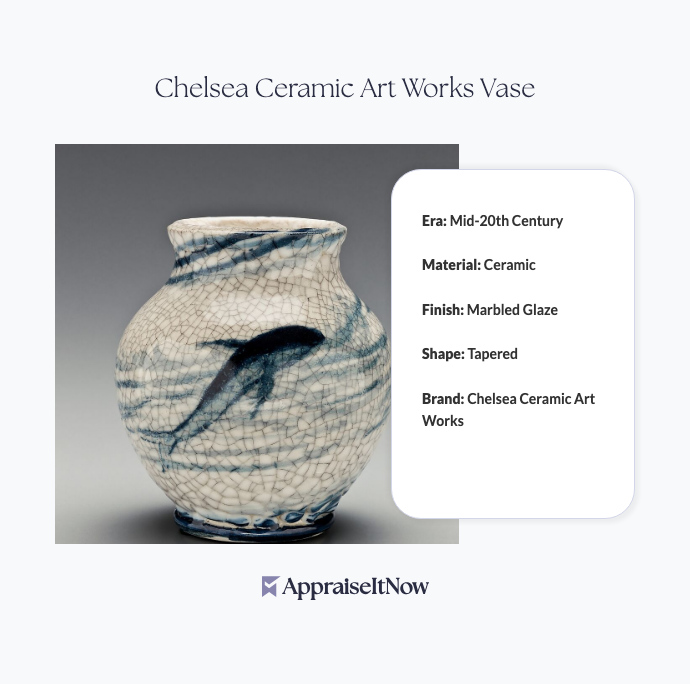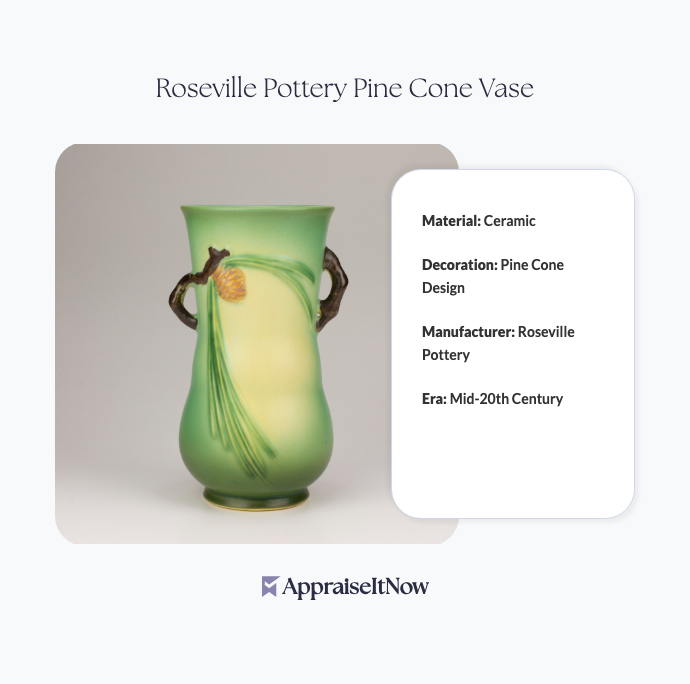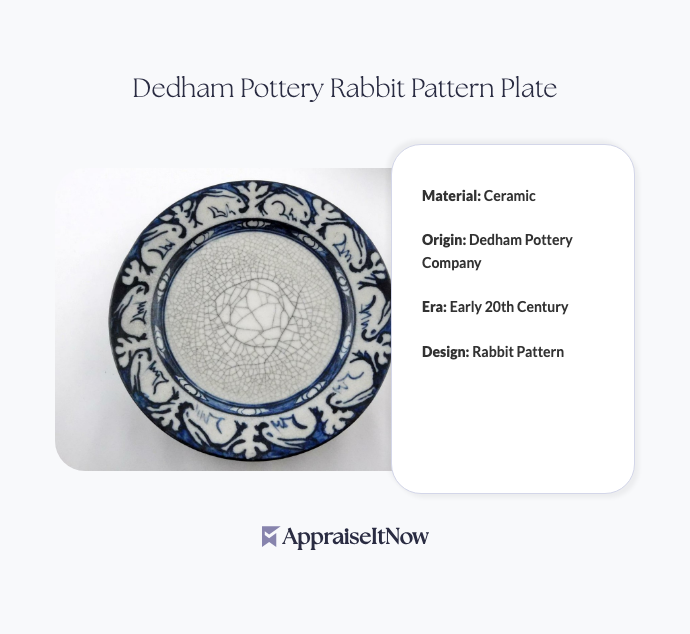<h1>How to Get Your Linthorpe Pottery by Christopher Dresser Appraised</h1>
<p>If you're the proud owner of a piece from the Linthorpe Pottery collection, you likely recognize you possess something special. These distinctive ceramics, designed by visionary industrial designer <strong>Christopher Dresser</strong> and produced by the pioneering company from 1879 onwards, represent both artistic achievement and solid investment value. Whether you're considering selling, seeking insurance coverage, or simply want to understand what your collection is worth, a professional appraisal provides the expertise and documentation you need. Current market estimates place quality Linthorpe Pottery pieces between <strong>$2,500 and $3,500</strong>, though values vary significantly based on condition, provenance, and specific design elements.</p>
<h2>Understanding Linthorpe Pottery's Historical Significance</h2>
<p>Linthorpe Pottery wasn't just another ceramic manufacturer of the 19th century. Founded during the height of the <strong>Aesthetic Movement</strong>, this company under Dresser's direction challenged every convention of traditional pottery-making. Dresser's legacy extends far beyond Linthorpe—he's considered one of the most important figures of the Aesthetic Movement and a pioneering force in industrial design whose influence shaped modern manufacturing principles. When you examine your Linthorpe piece, you're holding tangible evidence of a revolutionary moment in design history where artistic integrity and functional production merged seamlessly.</p>
<p>The ceramics produced represented something radical for their time: organic designs that rejected the ornamental excess of the Victorian era in favor of forms inspired by nature yet distinctly modern. This forward-thinking approach makes Linthorpe Pottery highly sought after by collectors who understand the intersection of art, design history, and cultural significance. Learning more about <a href="/blog/heritage-and-antique-furniture-appraisals-what-you-need-to-know">antique furniture appraisals</a> can provide context for how historical and artistic merit influences valuations across all decorative arts categories.</p>
<div class="callout tip"><p><strong>Collector's Insight</strong></p>
<p>Pieces bearing Dresser's documented design involvement or featuring his distinctive organic motifs command premium valuations compared to standard production ceramics.</p></div>
<h2>Where Was Linthorpe Pottery Located?</h2>
<p>Linthorpe Pottery operated in <strong>Middlesbrough, England</strong>, positioning it at the heart of industrial manufacturing innovation during the late 19th century. This geographic location placed the company within a network of progressive manufacturers and designers, contributing to its reputation for progressive, artistic production. Understanding this context helps appraisers verify authenticity and assess historical significance—location details often appear in maker's marks and documentation.</p>
<h2>Key Features That Affect Your Linthorpe Pottery Appraisal Value</h2>
<p>When evaluating your piece for appraisal, professional valuers examine specific characteristics that determine where your item falls within that <strong>$2,500 to $3,500</strong> range. The presence of <strong>innovative organic designs</strong> sets Linthorpe apart from contemporaneous pottery, and your appraiser will assess how distinctly these qualities manifest in your specific piece. Shape, glaze quality, size, and any impressed marks or signatures directly influence valuation. Pieces exhibiting particularly exceptional craftsmanship or rare glaze combinations may exceed typical market ranges.</p>
<table class='appraisal-table'>
<thead>
<tr>
<th>Feature</th>
<th>Impact on Value</th>
<th>Assessment Details</th>
</tr>
</thead>
<tbody>
<tr>
<td>Dresser attribution</td>
<td>+20-40%</td>
<td>Documented design involvement</td>
</tr>
<tr>
<td>Glaze quality</td>
<td>+10-30%</td>
<td>Unique color development or technique</td>
</tr>
<tr>
<td>Size and form</td>
<td>Variable</td>
<td>Larger display pieces typically premium</td>
</tr>
<tr>
<td>Original condition</td>
<td>-20-50%</td>
<td>Chips, cracks significantly reduce value</td>
</tr>
<tr>
<td>Documentation</td>
<td>+15-25%</td>
<td>Provenance, exhibition history, receipts</td>
</tr>
</tbody>
</table>
<h2>Identifying Authentic Linthorpe Pottery</h2>
<p>How can you identify Linthorpe pottery? Authentic pieces typically bear specific maker's marks, usually impressed into the base. Look for "LINTHORPE" along with sometimes "DRESSER" or a registered design number. The pottery's distinctive organic forms—flowing curves, asymmetrical designs, and nature-inspired motifs—reflect Dresser's revolutionary aesthetic approach. Color palettes often feature deep greens, terracottas, browns, and distinctive glazes that developed uniquely during firing. An appraiser skilled in <a href="/types/antique-artwork">antique artwork evaluation</a> can verify authenticity through scientific analysis if needed, examining clay composition and glaze characteristics against known examples.</p>
<div class="callout note"><p><strong>Authentication Consideration</strong></p>
<p>Professional appraisers may recommend laboratory analysis for high-value pieces to confirm glaze composition and clay sources match documented Linthorpe production standards.</p></div>
<h2>Christopher Dresser's Design Legacy</h2>
<p>Understanding Christopher Dresser's broader influence helps contextualize your Linthorpe piece within design history. Dresser's revolutionary approach rejected unnecessary ornamentation in favor of functional beauty—a philosophy that predated modern design principles by decades. His work across ceramics, metalwork, and glass design established principles that influenced the Arts and Crafts Movement and industrial design education for generations. Each Linthorpe Pottery piece represents Dresser's commitment to producing beautiful objects accessible through industrial manufacture rather than exclusively as luxury handcrafted items.</p>
<p>This democratization of good design—creating beautiful ceramics through thoughtful industrial processes—positioned Linthorpe Pottery as historically significant beyond mere decorative appeal. When seeking appraisal services, selecting an appraiser familiar with <a href="/blog/appraisals-for-fine-porcelain-and-ceramics-valuing-delicate-artistry">fine porcelain and ceramics valuation</a> ensures they understand the design history context that informs accurate valuations.</p>
<h2>What Makes Linthorpe Pottery Highly Sought After?</h2>
<p>Collectors pursue Linthorpe Pottery for several converging reasons. The <strong>exceptional quality and craftsmanship</strong> reflects pride in manufacture during an era when mass production often meant compromised quality. The <strong>distinctive Aesthetic Movement aesthetic</strong> appeals to design historians and decorative arts collectors worldwide. Most significantly, Linthorpe Pottery pieces represent a pivotal moment when artistic innovation merged with industrial capability—rare combinations that museums and serious collectors specifically seek out.</p>
<p>Supply scarcity also drives demand. The company operated for a limited period, and pieces from the Linthorpe Pottery era represent a finite inventory. Each surviving example becomes increasingly precious simply through time's passage and inevitable losses to breakage or neglect. Unlike mass-produced ceramics from larger manufacturers, Linthorpe pieces maintain individual character and artistic integrity that resonates with contemporary collectors valuing authenticity and design significance.</p>
<h2>Getting Your Appraisal: What to Prepare</h2>
<p>Before scheduling an appraisal, gather any documentation you possess about your piece. Original purchase receipts, exhibition catalogs, auction house documentation, or family provenance records significantly enhance an appraiser's ability to establish value accurately. Photograph your Linthorpe pottery piece from multiple angles, including clear views of any maker's marks, signatures, or decorative details. Note the piece's dimensions, weight, and any repairs or restorations—these details matter for comprehensive valuation.</p>
<p>Professional appraisers providing services through platforms like <strong>AppraiseItNow</strong> can work with your photographs and descriptions to initiate valuations, offering certified assessments from credentialed experts across the U.S. holding credentials including <strong>AAA, ISA, ASA, CAGA, and AMEA</strong> certifications. This expertise ensures your Linthorpe Pottery valuation meets professional standards accepted for insurance, estate planning, or transaction purposes.</p>
<div class="callout tip"><p><strong>Pro Tip</strong></p>
<p>Maintain detailed records of any conservation work or cleaning performed on your Linthorpe piece, as these documented efforts can support condition assessment and value justification.</p></div>
<h2>Market Context and Contemporary Collecting Trends</h2>
<p>The decorative arts market has shown renewed interest in late 19th-century ceramics, particularly pieces representing design innovation and historical significance. Linthorpe Pottery benefits from increased appreciation among collectors valuing both aesthetic achievement and manufacturing history. This demand extends across traditional auction houses, private collectors, and museums acquiring pieces for scholarly research and public display. Understanding these broader market dynamics helps contextualize why your particular piece carries value and why professional appraisal matters for establishing accurate valuations reflecting current collector demand.</p>
<p>When considering value, recognize that <a href="/types/personal-property">personal property appraisals</a> for Linthorpe Pottery serve multiple purposes: insurance coverage ensuring replacement capability at current market rates, estate planning providing accurate asset documentation, charitable donation tax deduction substantiation, or transaction support for buying or selling. Each purpose benefits from professional expertise and credible documentation.</p>
<h2>Why Professional Appraisal Matters</h2>
<p>Attempting self-valuation or relying on casual estimates leaves you vulnerable to undervaluation during sales or inadequate insurance coverage. A certified appraisal provides independent, documented assessment of your Linthorpe Pottery's value based on comparable sales analysis, condition assessment, and market expertise. Professional appraisers investigate provenance, verify authenticity, and provide detailed written reports suitable for legal, financial, or insurance purposes. This documentation stands as defensible evidence of value in disputes, tax proceedings, or insurance claims.</p>
<p>The difference between a $2,500 piece and a $3,500 piece—or potentially higher for exceptional examples—often hinges on factors only experienced appraisers consistently identify. Glaze variations, attribution certainty, condition nuances, and provenance quality all require specialized knowledge to properly assess and document.</p>
<div class="callout note"><p><strong>Key Takeaway</strong></p>
<p>A certified appraisal of your Linthorpe Pottery by Christopher Dresser provides authoritative documentation of its $2,500-$3,500 market value, protecting your investment through insurance accuracy, supporting estate planning needs, and ensuring confident buying or selling decisions backed by professional expertise and credible market analysis.</p></div>







.avif)







